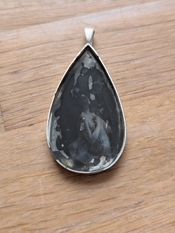Hello!
I'm trying to develope photos onto my handmade silver jewelry using FOMA emulsion. It worked quite well with polyurethane clear coating. I don't like using it thou so I have tried photographic gelatine coating with albumen fixer instead.
It looks good until I drop the jewelry into the illford rapid fixer bath. Of some reason the silver underneath the gelatine turns black on some areas, like silver does when I gets in contact with sulphur. The untreated silver is not affected.
Why is this happening? Can it be prevented?
The main reason that I don't want to use polyurethane is that I have heard that all oil based pu will yellow over time(even thou it's written on the product it won't...). Anybody has any input there? Are we talking 1, 10 or 50 years? I will cover it with uv resistant acrylic coat so uv should not be a problem.
Has anybody tried using Krylon acrylic clear coating as subbing? I don't think it's water based.
I'm trying to develope photos onto my handmade silver jewelry using FOMA emulsion. It worked quite well with polyurethane clear coating. I don't like using it thou so I have tried photographic gelatine coating with albumen fixer instead.
It looks good until I drop the jewelry into the illford rapid fixer bath. Of some reason the silver underneath the gelatine turns black on some areas, like silver does when I gets in contact with sulphur. The untreated silver is not affected.
Why is this happening? Can it be prevented?
The main reason that I don't want to use polyurethane is that I have heard that all oil based pu will yellow over time(even thou it's written on the product it won't...). Anybody has any input there? Are we talking 1, 10 or 50 years? I will cover it with uv resistant acrylic coat so uv should not be a problem.
Has anybody tried using Krylon acrylic clear coating as subbing? I don't think it's water based.









 .
. 

